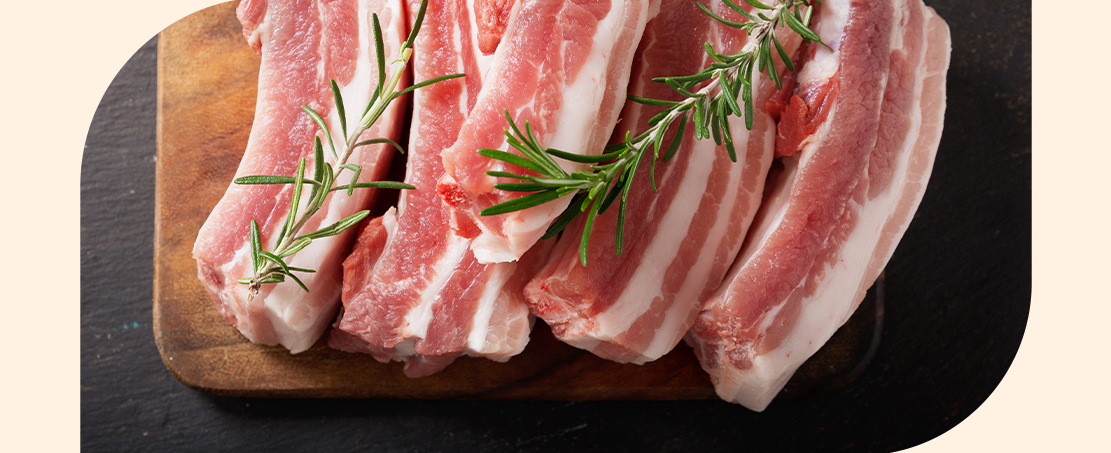Pork Glycemic Index: Understanding Its Impact on Blood Sugar and Diabetic Diets
Pork is a popular and versatile source of protein around the world. For individuals managing diabetes or watching their blood sugar levels, understanding how different foods affect their glycemic response is essential. When it comes to pork, many wonder about its glycemic index and whether it fits into a diabetic-friendly meal plan. This comprehensive guide explores the pork glycemic index, its nutritional value, benefits and risks for people with diabetes, and practical tips for incorporating pork into a healthy, balanced diet. At Diabetic Diet Book, everything you need to manage your diabetes effectively has been thoughtfully included.
What is the Glycemic Index?
The glycemic index (GI) is a scale that ranks carbohydrate-containing foods by how quickly they raise blood sugar levels. Foods are rated on a scale of 0 to 100. A GI of 55 or less is considered low, 56–69 is medium, and 70 or above is high. The higher the glycemic index, the more rapidly the food increases blood sugar levels.
Pork Glycemic Index: Where Does It Stand?
Unlike carbohydrate-rich foods, pork is a protein-rich food and contains very little or no carbohydrates. Because of this, pork has a glycemic index of zero, meaning it does not raise blood sugar levels. This makes pork a favorable protein option for diabetics when prepared in a healthy way.
However, how pork is cooked, what it is served with, and the cut of pork used can influence its overall impact on a meal’s glycemic load.
Nutritional Profile of Pork
A 100-gram serving of cooked, lean pork (such as tenderloin) contains:
- Calories: 170–190
- Protein: 26 grams
- Fat: 6–10 grams (depends on the cut)
- Carbohydrates: 0 grams
- Iron, zinc, vitamin B6, and B12
This protein-rich profile makes pork a good source of essential nutrients without affecting blood glucose levels directly.
Health Benefits of Including Pork in a Diabetic Diet
High-Quality Protein Source
Protein is crucial for building and repairing tissues, supporting immune function, and helping with satiety. For people with diabetes, protein slows digestion and reduces the rate of glucose absorption when consumed with carbohydrates.
Rich in Essential Nutrients
Pork is a good source of important nutrients like thiamine, selenium, zinc, and vitamin B12, which support metabolic health and energy production.
Supports Muscle Mass
Maintaining muscle mass is important for metabolic health and insulin sensitivity. Pork’s high protein content helps with muscle preservation, especially in older adults with diabetes.
Also Read: 3 Desserts for Diabetics: Guilt-Free Sweet Treats to Enjoy Anytime
Risks of Eating Pork for Diabetics
Fat Content and Heart Health
Some cuts of pork are high in saturated fat, which can raise LDL (bad) cholesterol and increase the risk of heart disease—a common concern for diabetics. Opt for lean cuts like tenderloin, loin chops, and sirloin roast to reduce fat intake.
Processed Pork and Additives
Processed pork products such as bacon, sausages, and ham often contain added sugars, sodium, preservatives, and unhealthy fats. These additives can contribute to insulin resistance and cardiovascular risk.
Best Cooking Methods for Diabetics
- Grilling or Baking: Reduces the need for added fat and preserves nutrients.
- Slow Cooking: A great way to make lean cuts tender without frying.
- Broiling or Roasting: Enhances flavor without unhealthy oils.
- Avoid Deep Frying: This adds unnecessary calories and saturated fat.
Pork in Combination with Carbohydrates
While pork itself does not raise blood sugar, what you eat alongside it matters. Pair pork with low-GI vegetables like broccoli, spinach, zucchini, or cauliflower. Avoid refined grains, sugary sauces, and carb-heavy sides like mashed potatoes or white rice.
Portion Control and Frequency
A balanced diabetic meal includes lean protein, healthy fats, fiber, and low-GI carbohydrates. A proper portion size of pork is about 3–4 ounces cooked. Eating pork a few times per week, prepared healthfully, is generally safe and beneficial for diabetics.
Diabetic-Friendly Pork Meal Ideas
Grilled Pork Tenderloin with Steamed Vegetables
Lean, grilled pork paired with steamed green beans, carrots, and quinoa provides a balanced and satisfying meal.
Stir-Fried Pork with Cauliflower Rice
Use lean strips of pork with low-sodium soy sauce, garlic, and mixed vegetables. Serve with cauliflower rice for a low-GI alternative.
Pork Lettuce Wraps
Ground pork cooked with garlic, ginger, and a dash of tamari, wrapped in crisp romaine or iceberg lettuce for a refreshing and low-carb snack.
Pork vs. Other Proteins for Diabetics
- Pork vs. Chicken: Both are low-carb proteins. Chicken is often leaner, especially skinless breast meat.
- Pork vs. Fish: Fish contains heart-healthy omega-3 fatty acids. Including fatty fish like salmon is recommended.
- Pork vs. Beef: Lean cuts of pork are comparable to lean cuts of beef in terms of fat content, but some prefer pork for its tenderness and flavor.
Common Myths About Pork and Diabetes
Myth 1: Pork Raises Blood Sugar
Fact: Pure pork contains no carbohydrates and does not directly raise blood sugar.
Myth 2: Pork Is Too Fatty for Diabetics
Fact: Lean cuts are low in fat and suitable for a diabetic diet when cooked properly.
Myth 3: All Pork Products Are Unhealthy
Fact: While processed pork should be limited, fresh pork can be a healthy protein option.
Importance of Overall Diet and Lifestyle
While focusing on the pork glycemic index is helpful, the overall dietary pattern matters most. A diet rich in vegetables, whole grains, lean proteins, and healthy fats, combined with regular physical activity and stress management, supports long-term blood sugar control.
FAQs
1. What is the glycemic index of pork?
Pork has a glycemic index of zero because it contains no carbohydrates.
2. Is pork safe for people with diabetes?
Yes, when lean cuts are chosen and cooked in a healthy manner, pork is a good source of protein for diabetics.
3. Does pork affect blood sugar levels?
Not directly. However, how it is prepared and what it is served with can influence blood glucose levels.
4. What are the best pork cuts for diabetics?
Tenderloin, loin chops, sirloin roast, and pork loin are lean and healthier choices.
5. Can diabetics eat bacon or ham?
It is best to limit processed meats like bacon and ham due to added sodium, preservatives, and sugars.
6. How much pork should a diabetic eat?
A portion of 3–4 ounces of cooked lean pork is appropriate for a diabetic meal.
7. Is pork better than beef for diabetics?
Both can be healthy in moderation if lean cuts are selected. Pork is often more tender and slightly lower in saturated fat.
8. Are there diabetic-friendly pork recipes?
Yes, options like grilled pork with vegetables, stir-fried pork with cauliflower rice, or pork lettuce wraps are great.
9. Can pork be part of a low-carb diet for diabetes?
Absolutely. Pork is low in carbs and can fit well into low-carb or keto-friendly diabetic meal plans.
10. What should diabetics avoid when cooking pork?
Avoid breaded and deep-fried pork, sugary glazes, and processed pork products high in sodium and preservatives.
Conclusion
The pork glycemic index is zero, making pork a low-glycemic, high-protein food suitable for people with diabetes. Choosing lean cuts, using healthy cooking methods, and combining pork with nutrient-dense, low-GI sides can make pork a regular part of a balanced diabetic diet. Always be mindful of portion sizes and the overall composition of your meals to support stable blood sugar levels and better health outcomes.






![Low Carb Diet: Complete Guide in 2025 [Latest and Updated]](https://diabeticdietbook.com/wp-content/uploads/2024/02/no-carb-diet-1296x728-feature-768x431.webp)